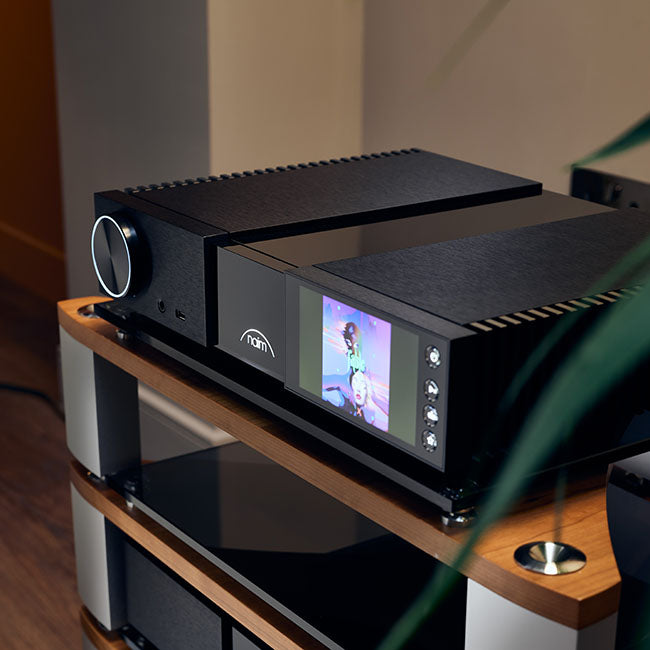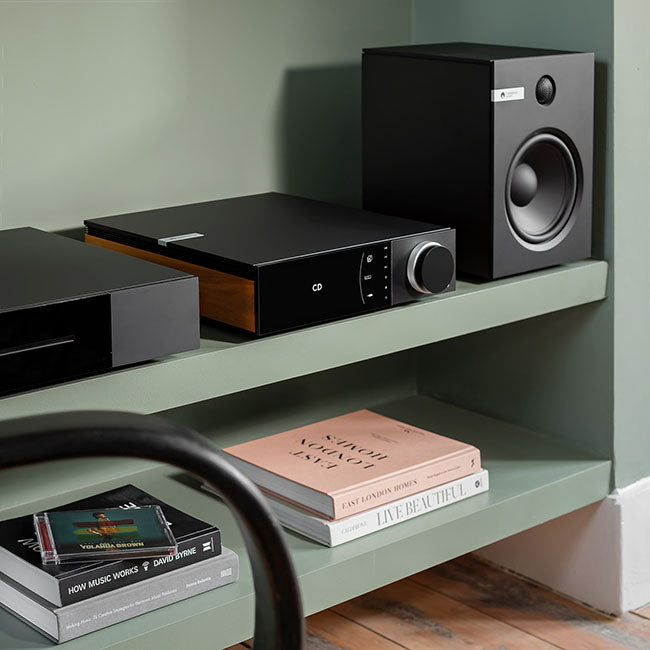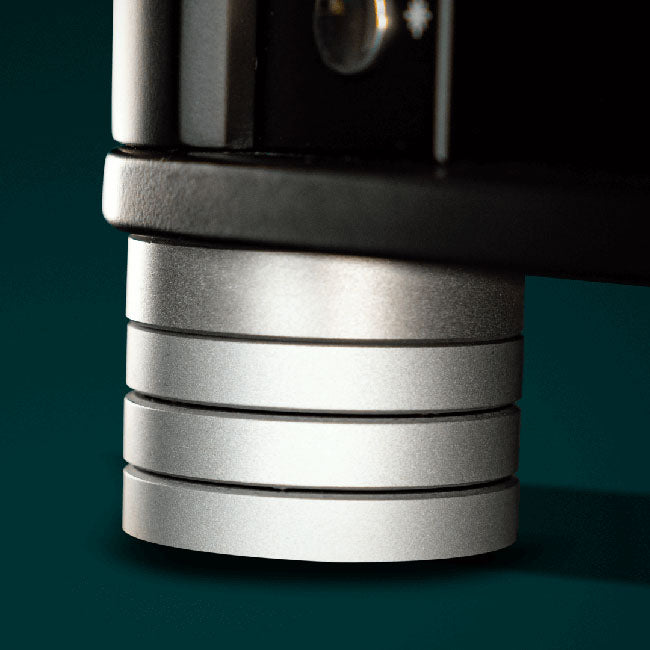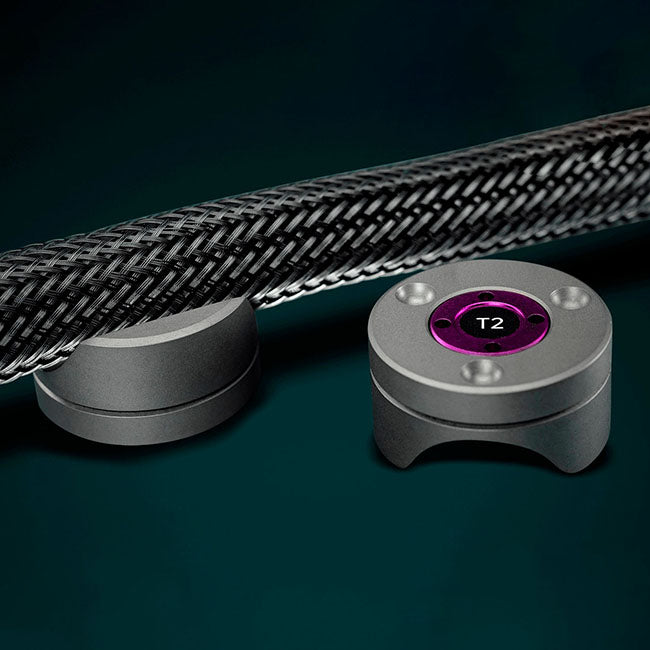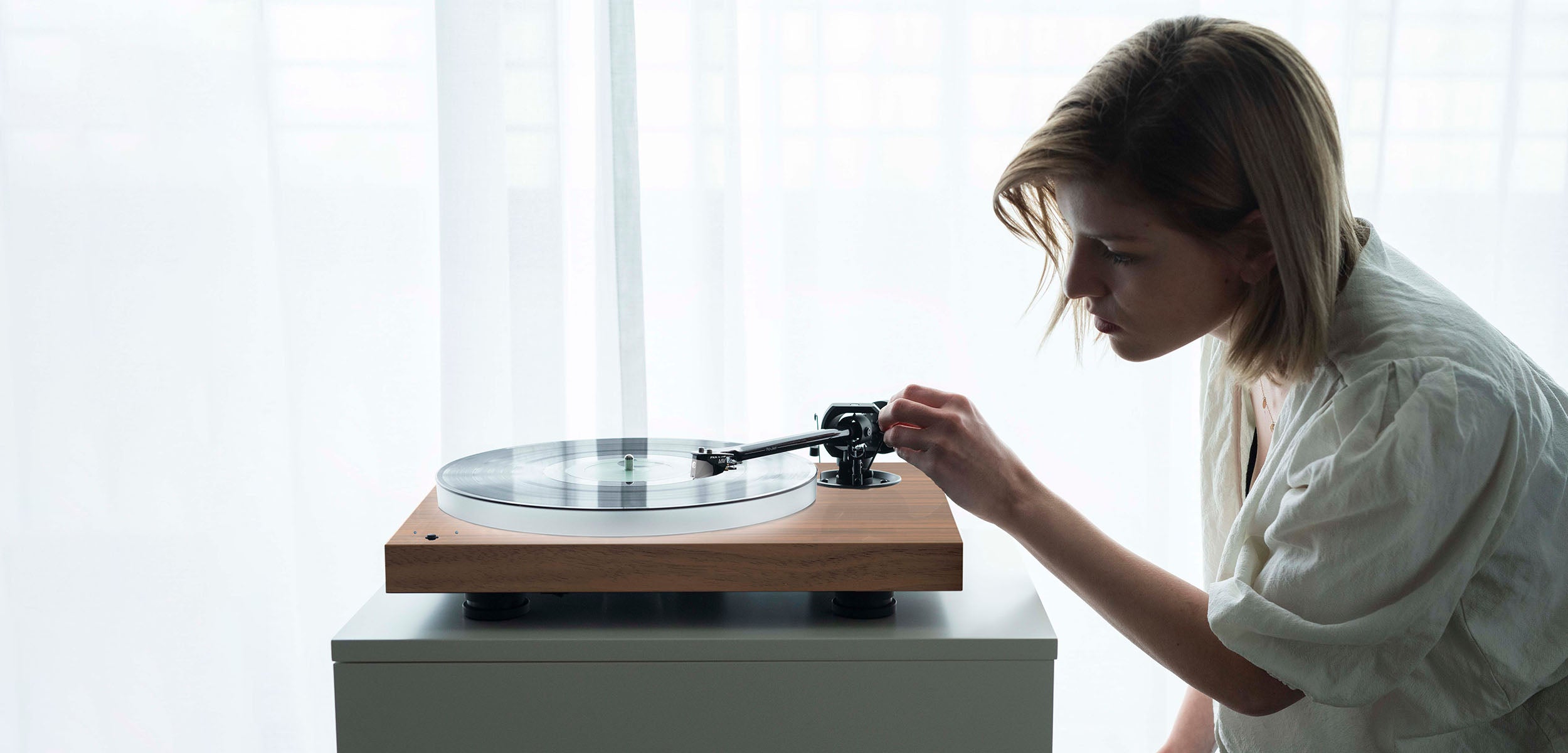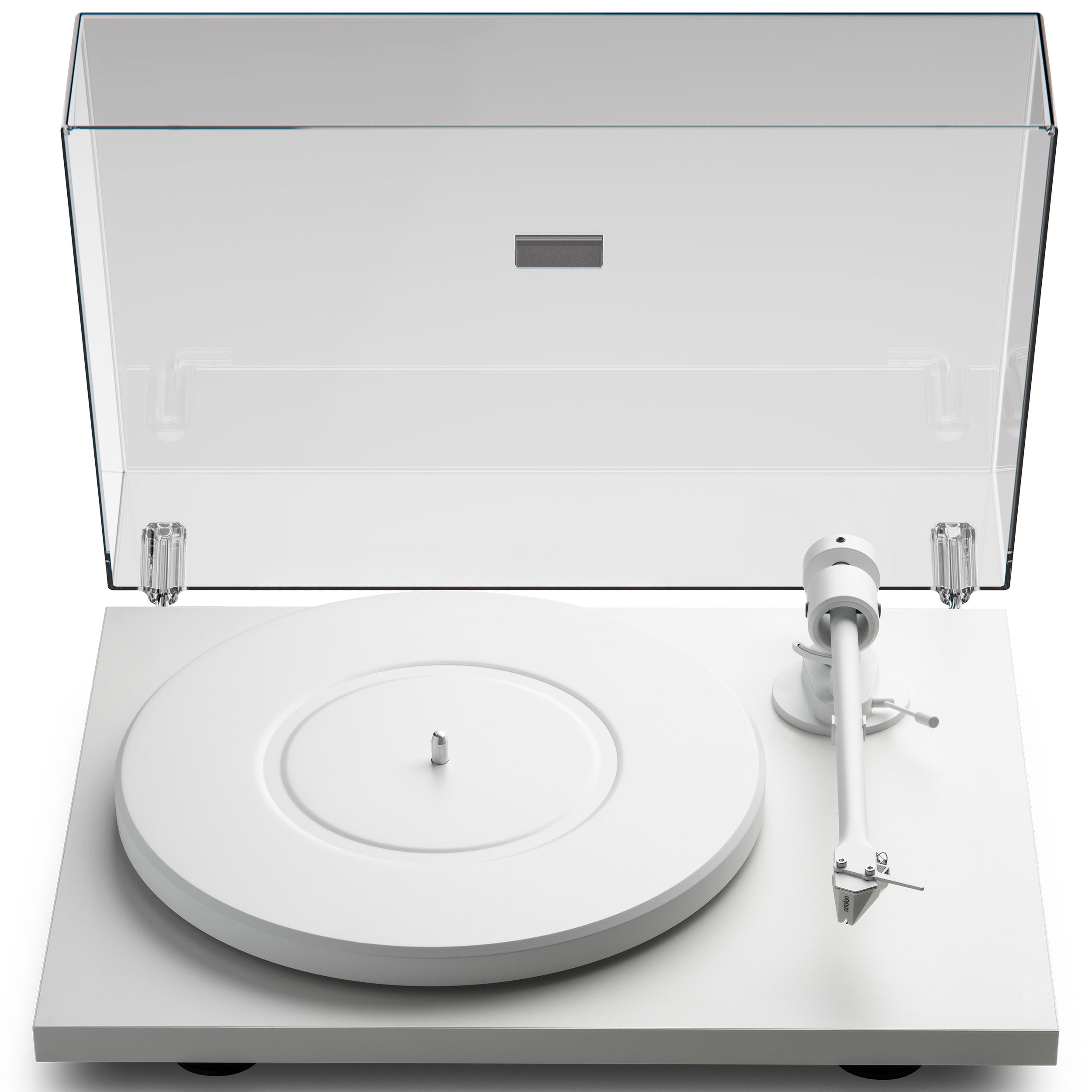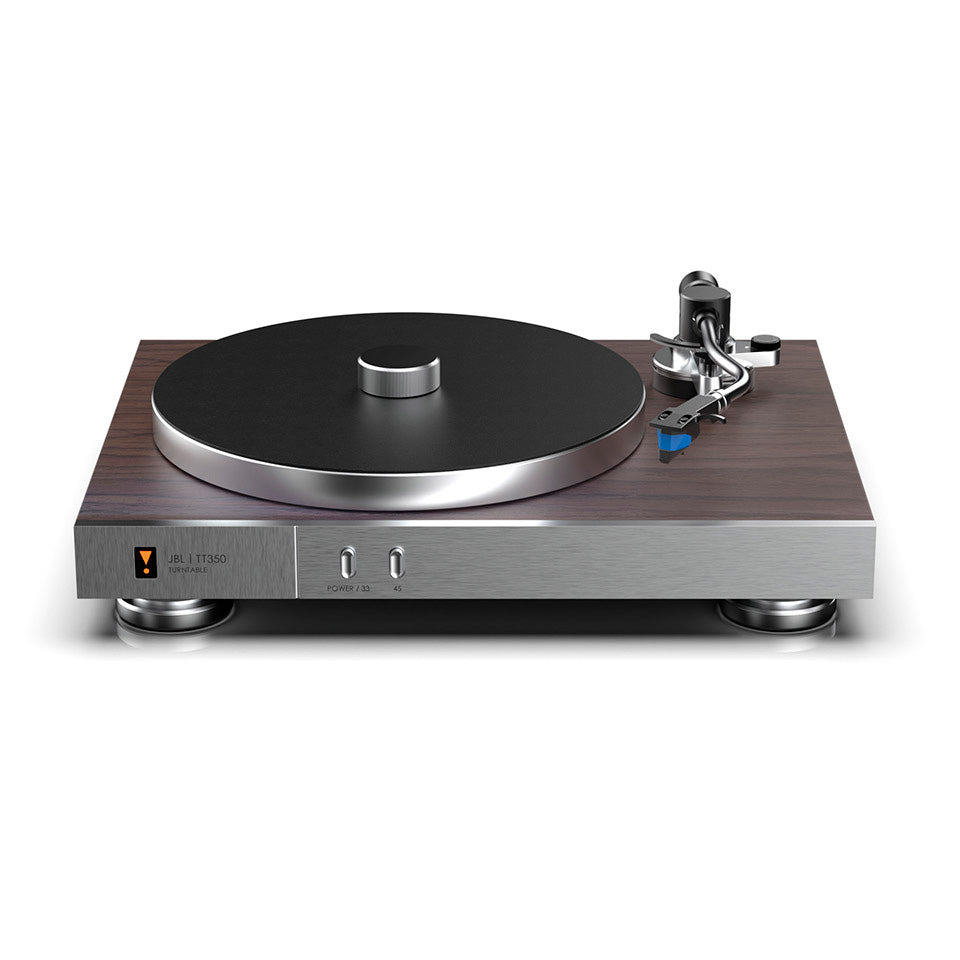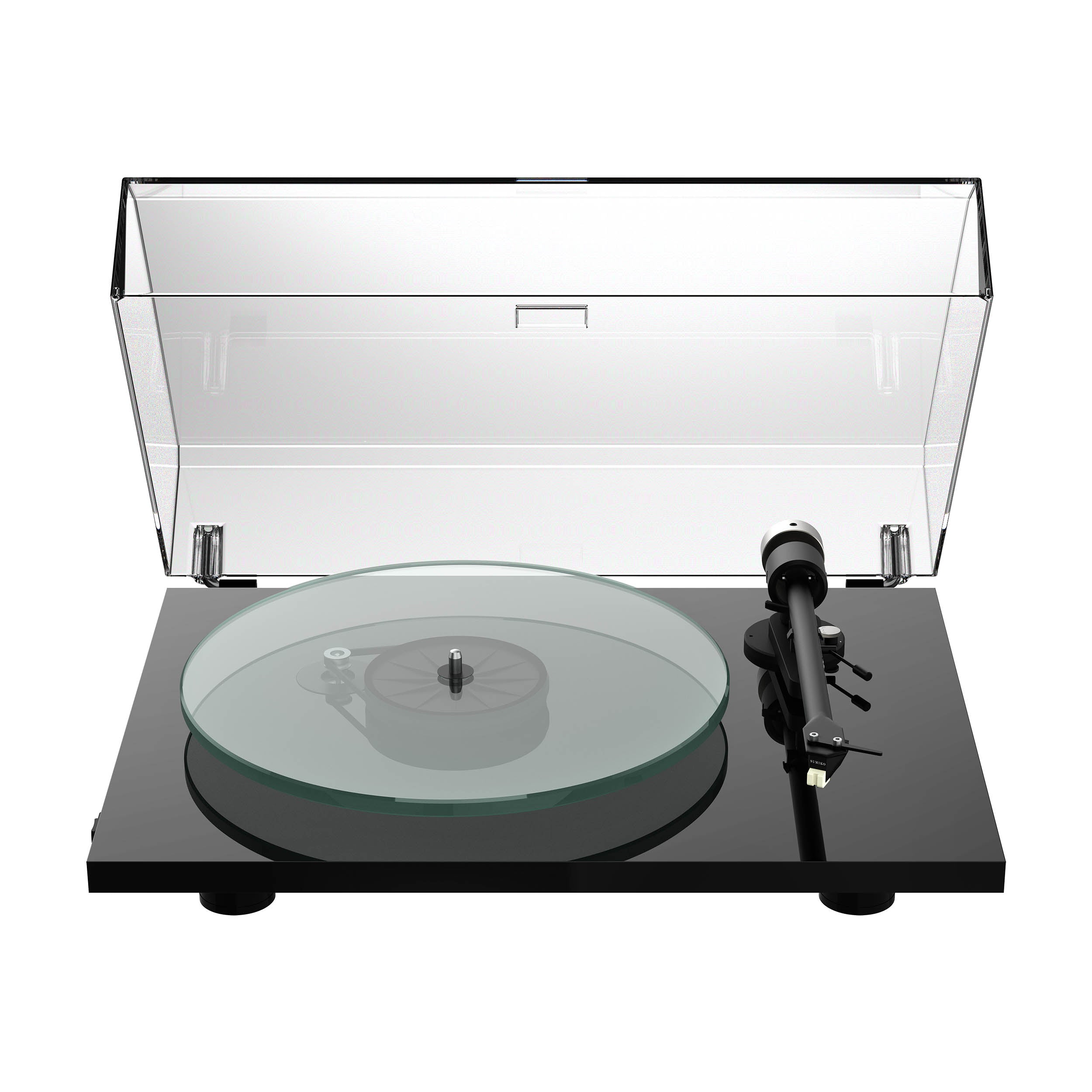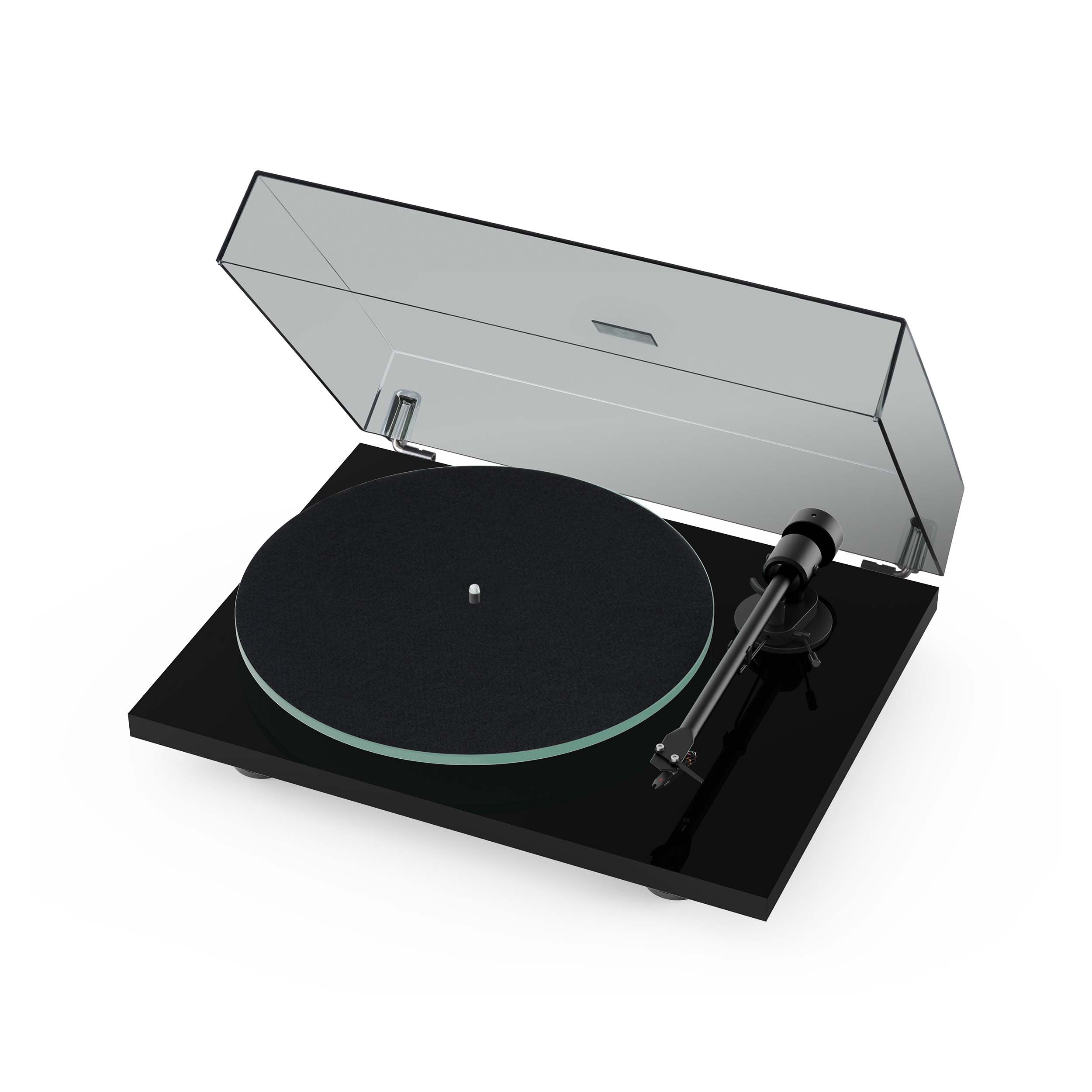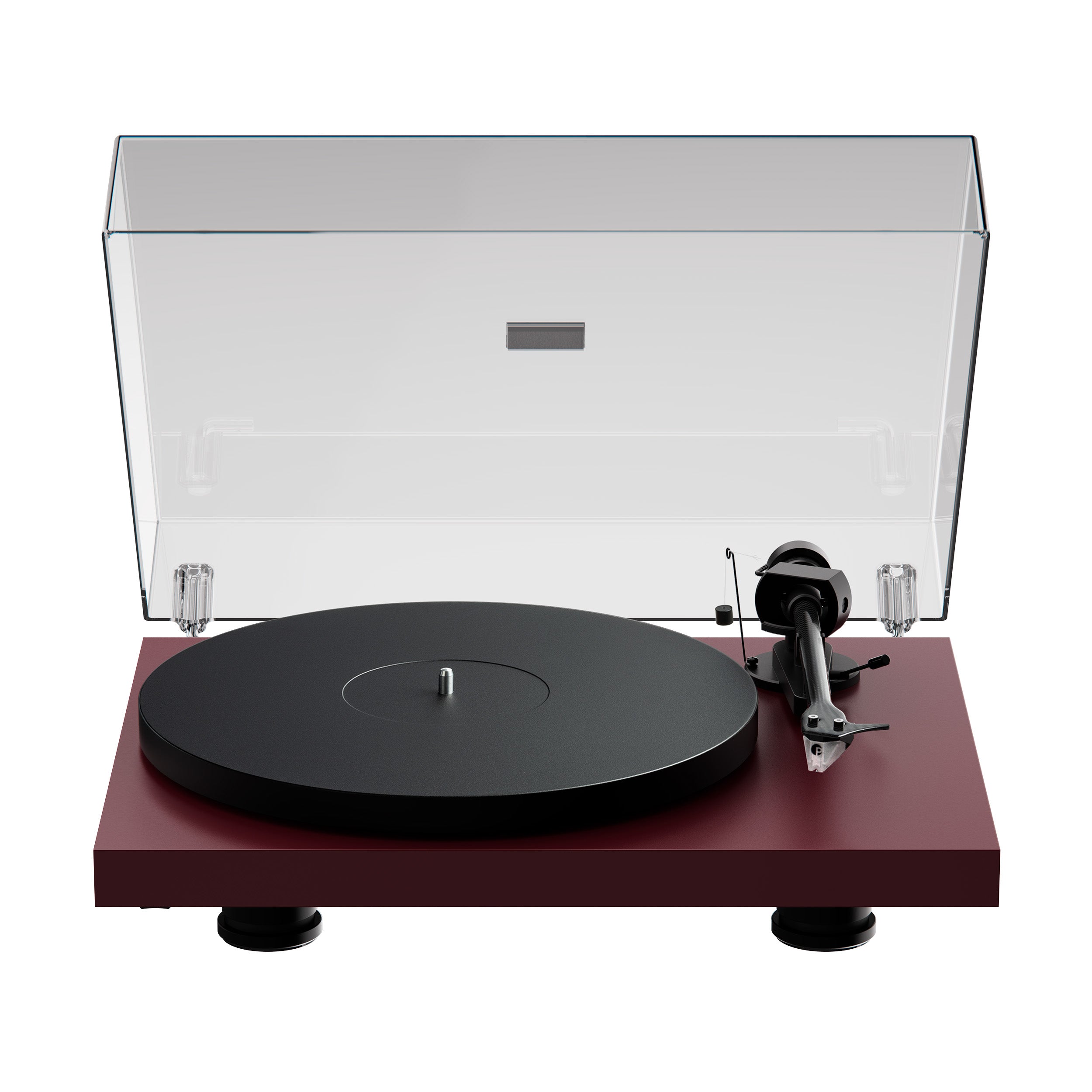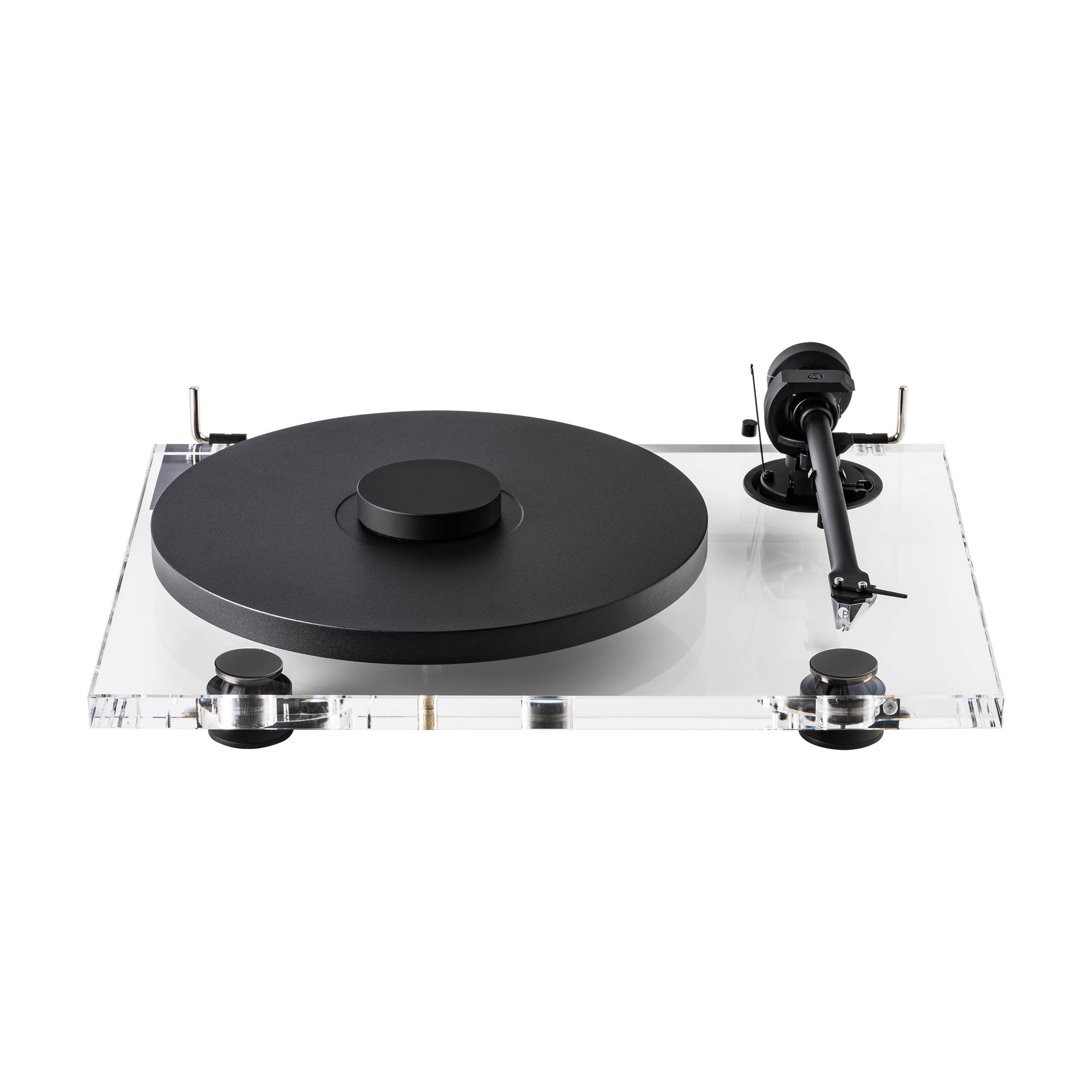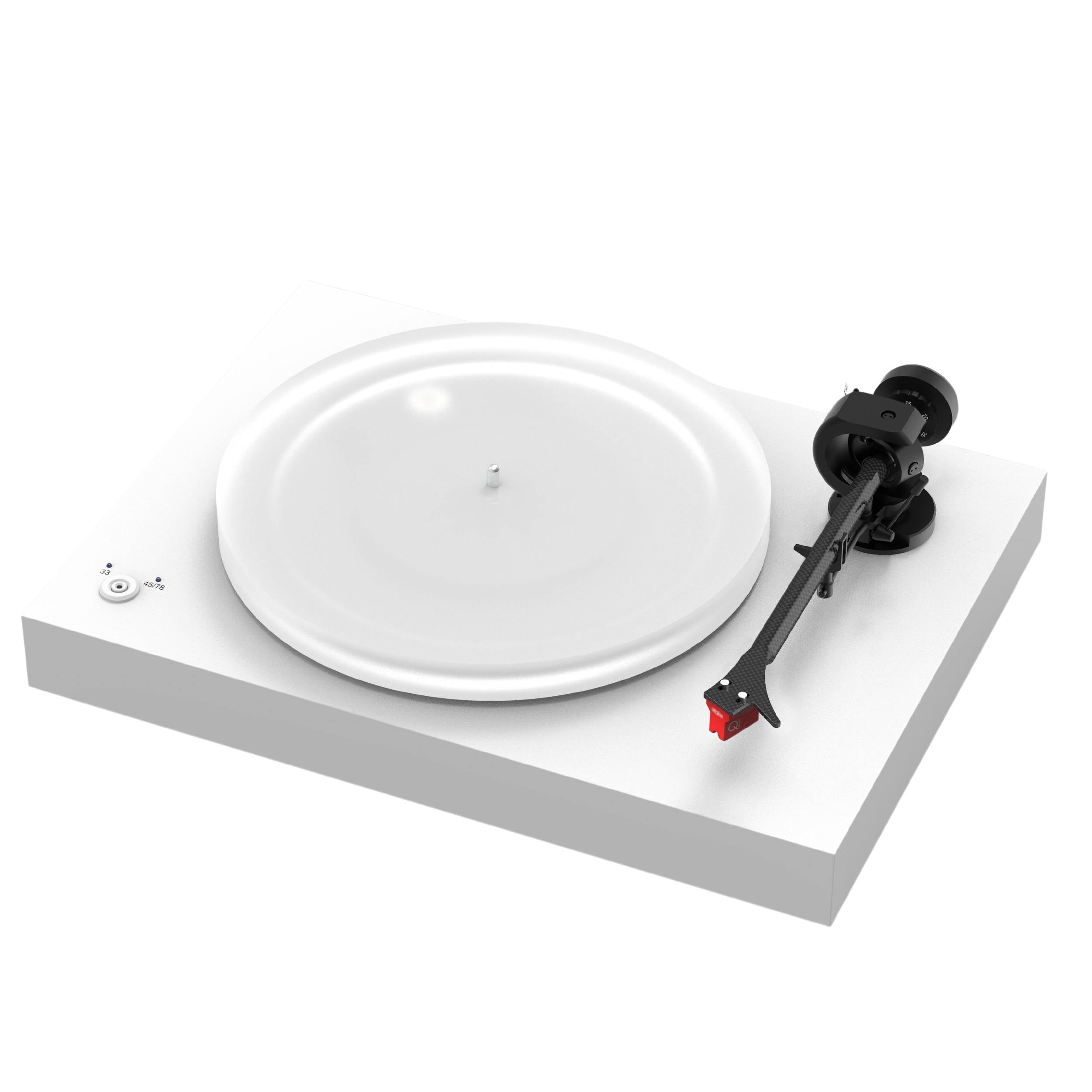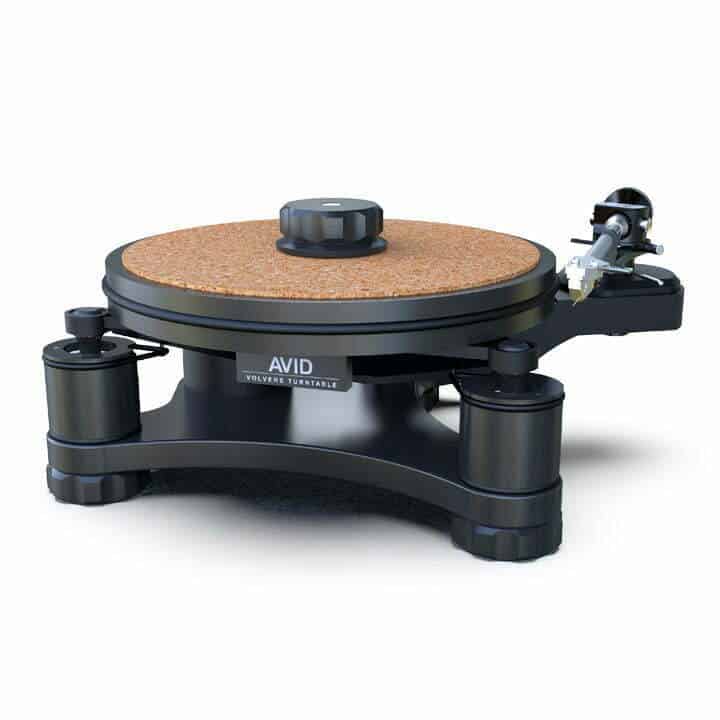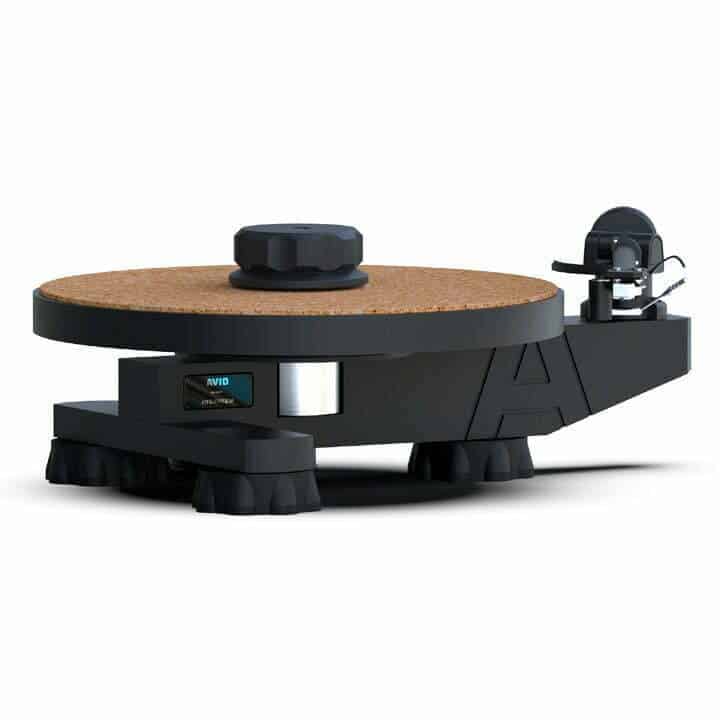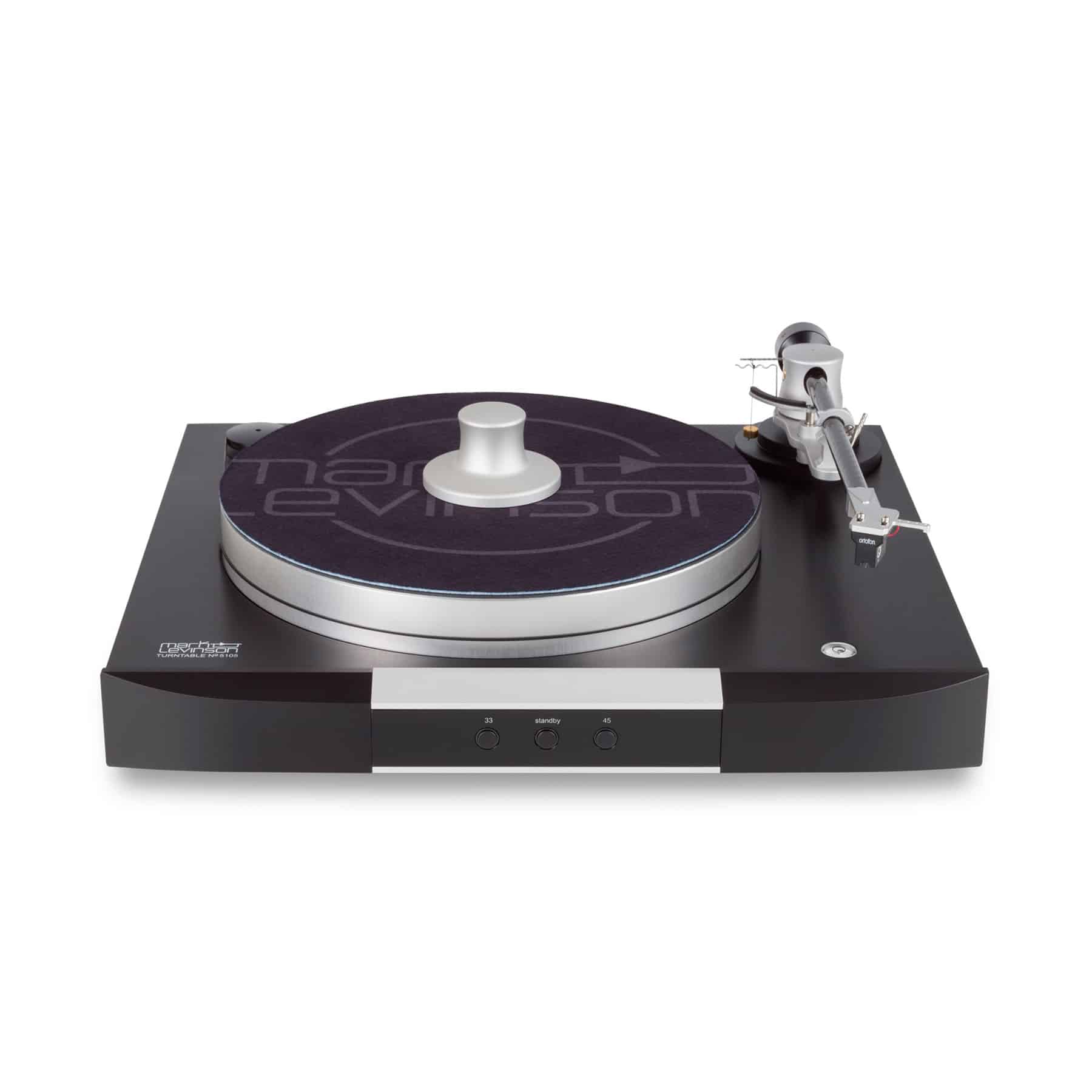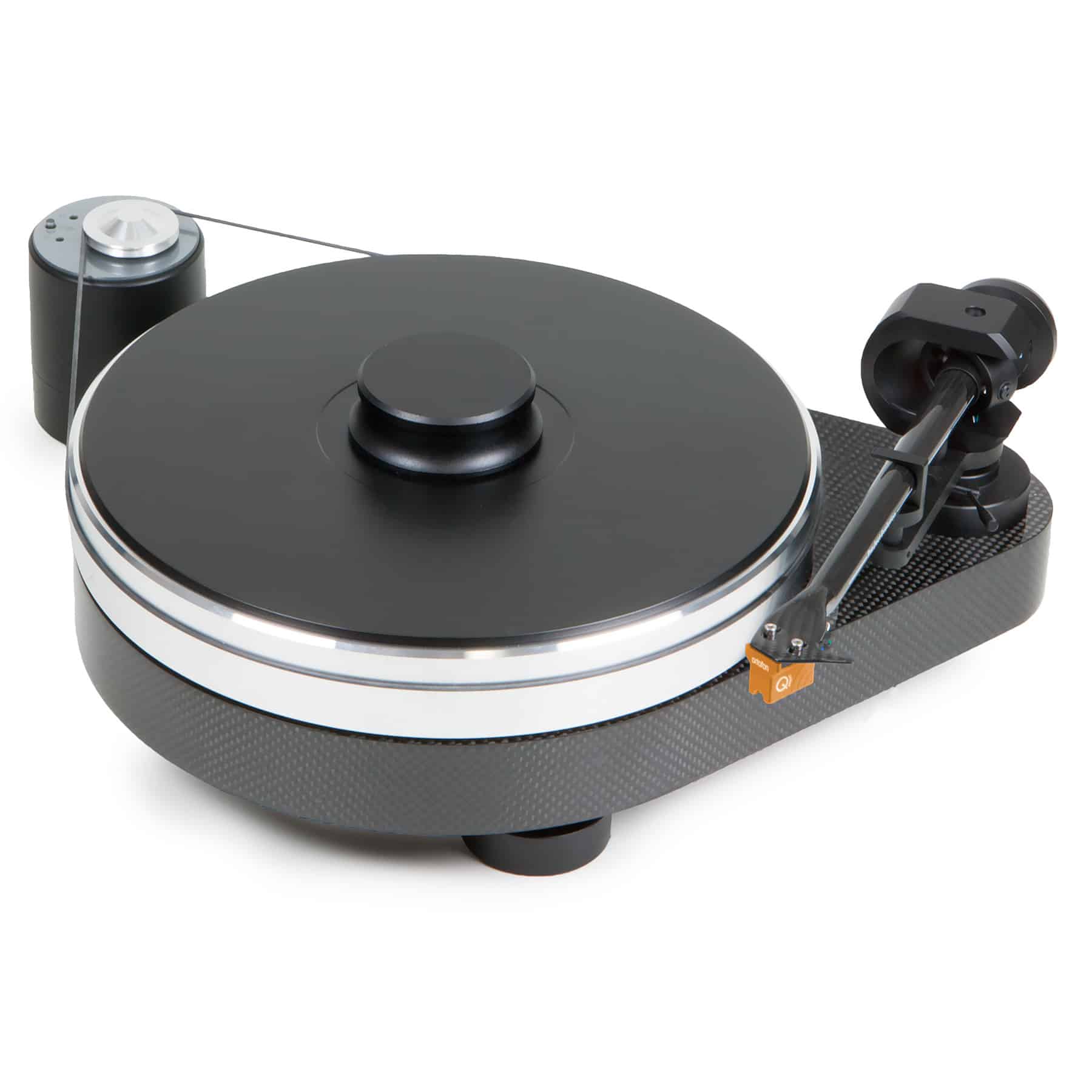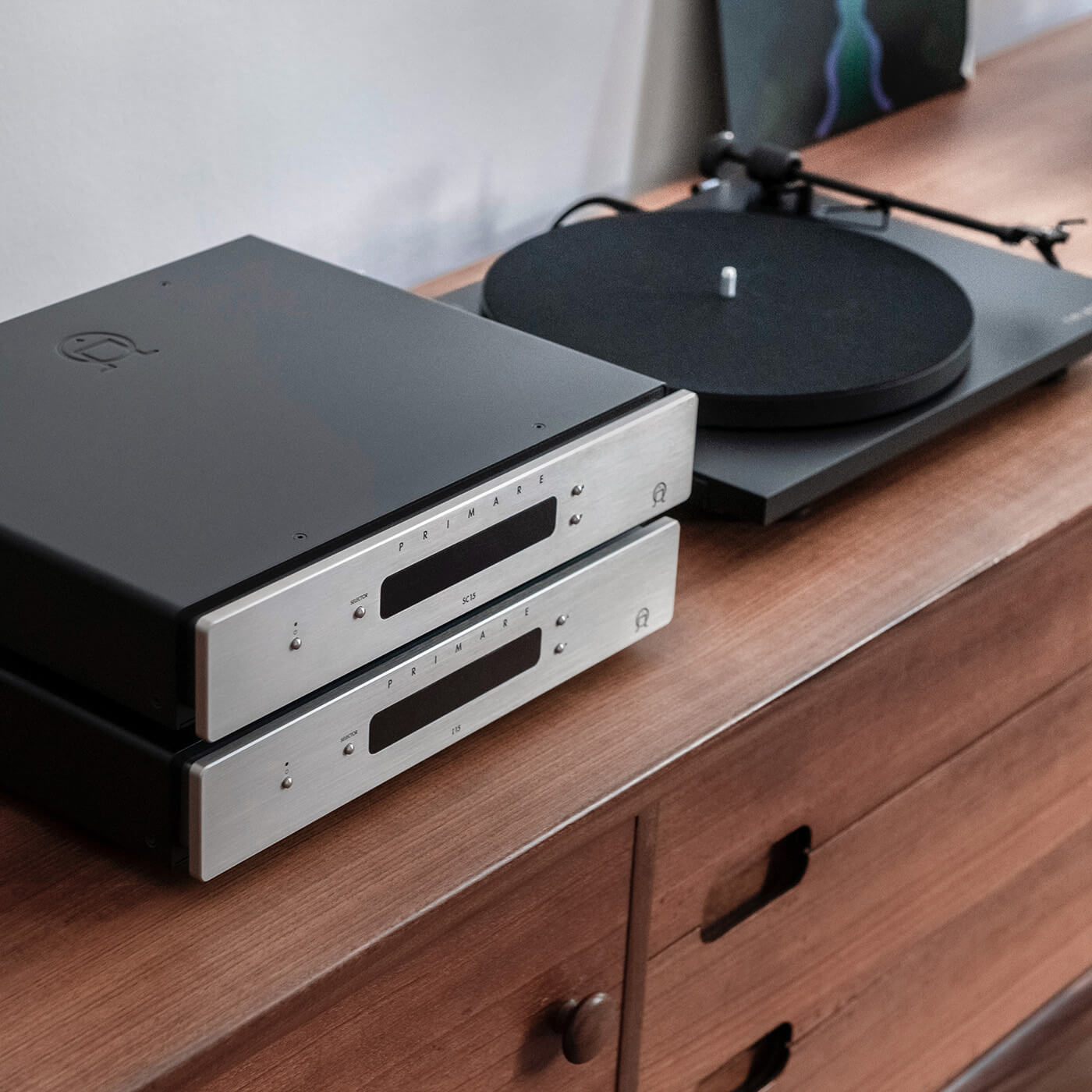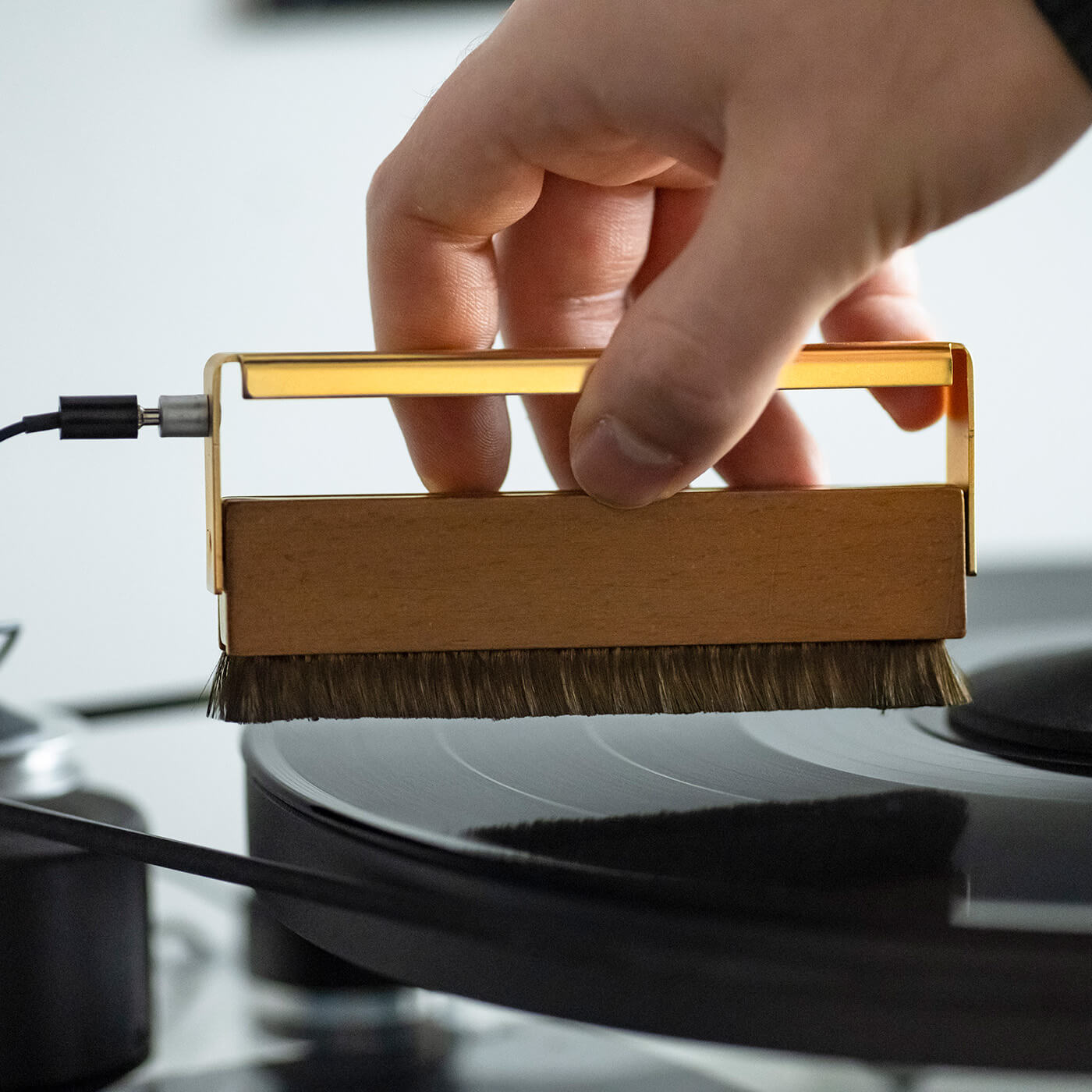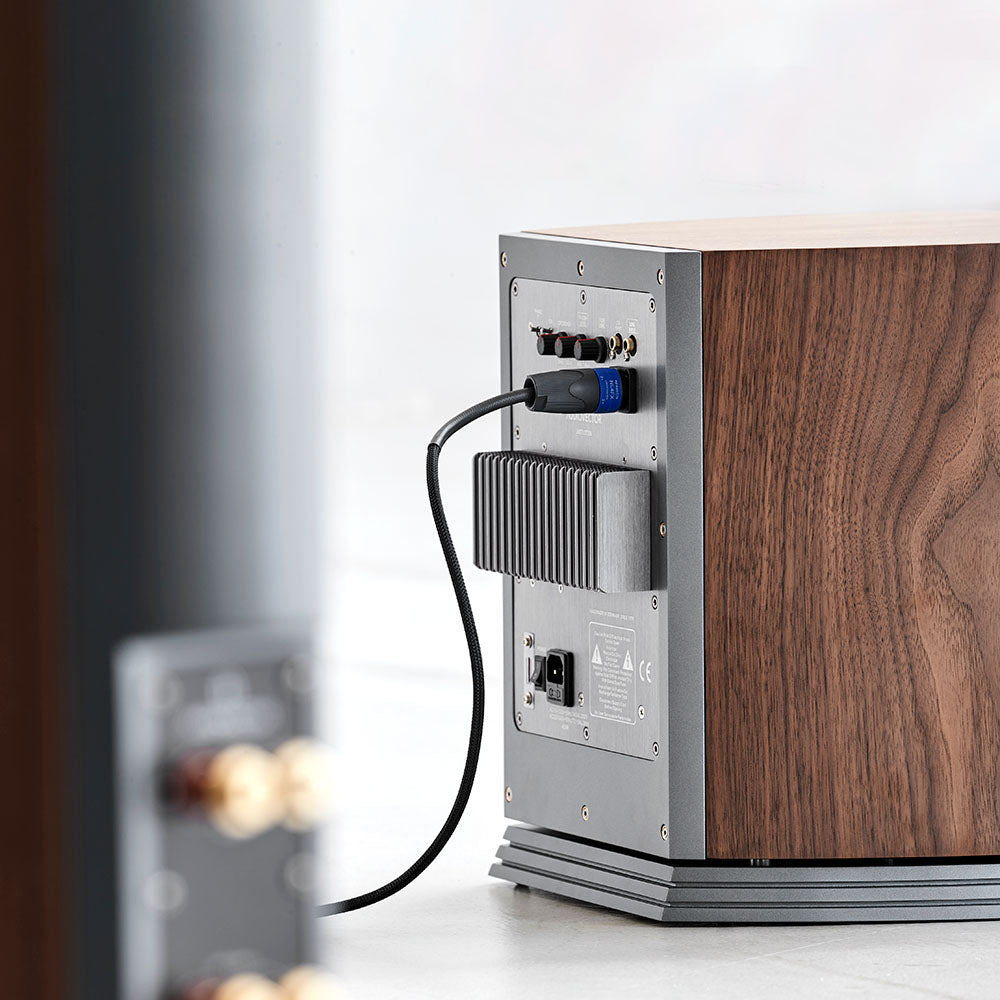At a time when vinyl is experiencing a resurgence, it's important to get a handle on how to get that magical sound out of your records. You get that by having a record player that is set and adjusted correctly, which you can read all about how to do in this guide.
After you have followed our steps, you will find that you have set up your record player to deliver a music experience in a special class. It takes a little patience and precision, but when everything is set up correctly, you'll experience your favorite music with a clarity and depth you never thought possible. So take the time to adjust and fine-tune, then immerse yourself in the rich tones, body and nuances that vinyl records can give you.
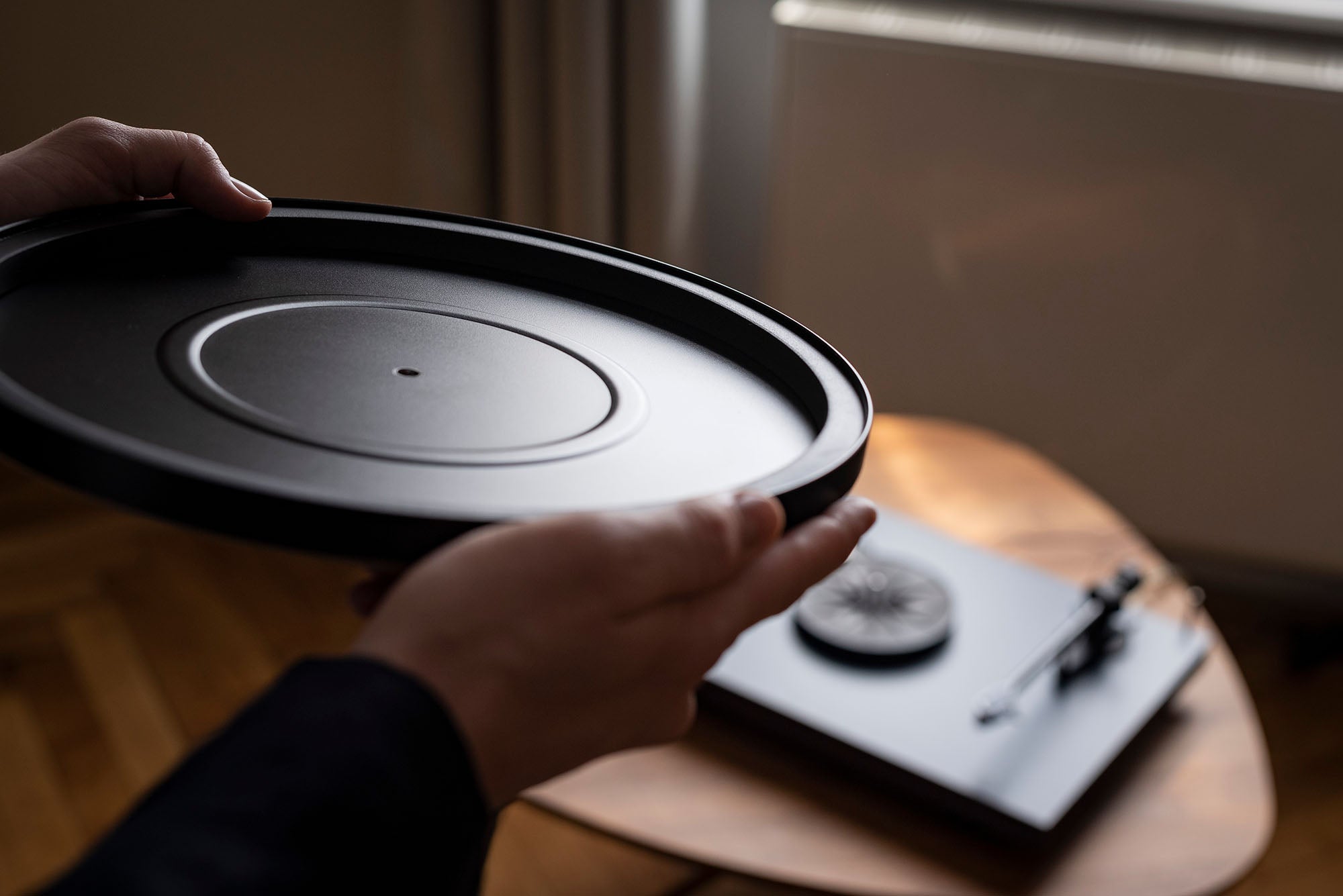
The importance of turntable materials and mass
Turntables are incredibly susceptible to vibrations and resonances, which pose a major threat to sound quality. Record players are sensitive devices that translate the microscopic variations in the record's grooves into sound. Any kind of vibration can thus disrupt this precise process, and it is therefore important to have control over how you minimize them.
Vibrations can originate from various sources such as floors, speakers, surrounding furniture or even the turntable motor itself. These vibrations, when transmitted to the turntable, can result in a distorted and degraded sound reproduction. To minimize vibrations and resonances, you should therefore think about where you place the record player.
We recommend that you place the turntable on a vibration dampening surface and away from speakers and other sources that create vibrations. For serious enthusiasts, it may be a good idea to invest in a dedicated turntable shelf that effectively isolates the turntable from its surroundings.
Minimize resonances and vibrations in the turntable
The choice of materials and their mass has a significant influence on vibrations and resonances. Materials such as MDF, metal, acrylic and carbon fiber each have unique properties that all contribute to controlling vibrations. For example, MDF is known to counteract vibrations and create a stable base, but often the materials will be combined to optimize the turntable's ability to handle unwanted energies. In the expensive turntables, a combination of materials such as acrylic, metal and carbon fiber is often used to achieve the best possible sound quality.
The mass of the turntable also affects its ability to withstand resonances. A suitable mass can act as a stable base and reduce the risk of resonances that can distort the sound. The many record player manufacturers have very different philosophies when it comes to how the materials and mass should be put together to achieve the best sound quality.
British Rega is one of those who use the mass very judiciously. This can be seen, for example, in the design of their record player platter, where most of the mass is placed on its outside, so that a large flywheel effect is created. At the same time, they have made the inside of the plate as stiff and light as possible, so that the perfect compromise is created. Because the turntable needs extra mass to be able to maintain a constant rotation speed, but too much weight can quickly cause problems for the center bearing.
Although the record player manufacturers differ in their philosophies, they agree that mass and materials are of great importance to the record player's sound quality.
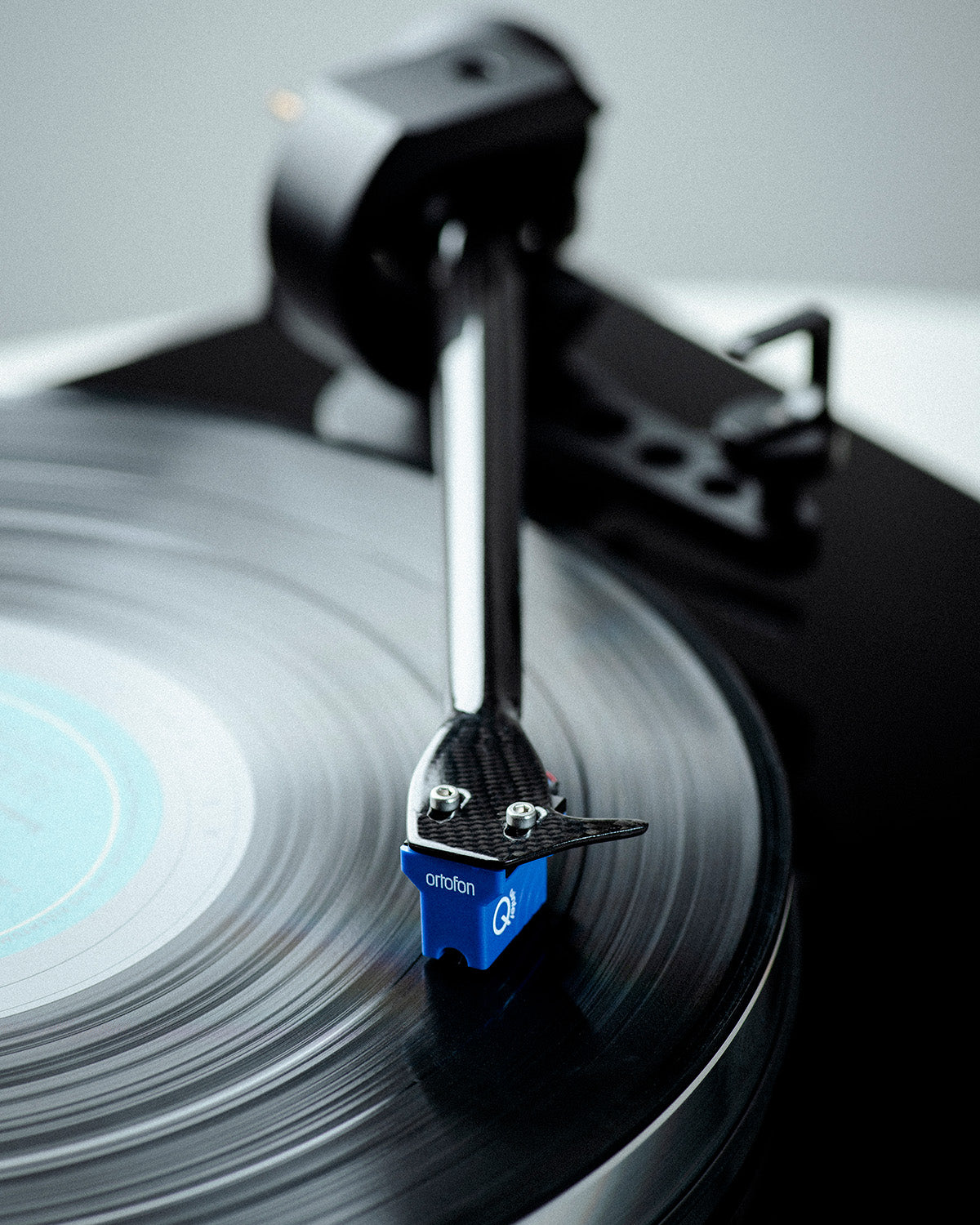
Tone arm in carbon fiber
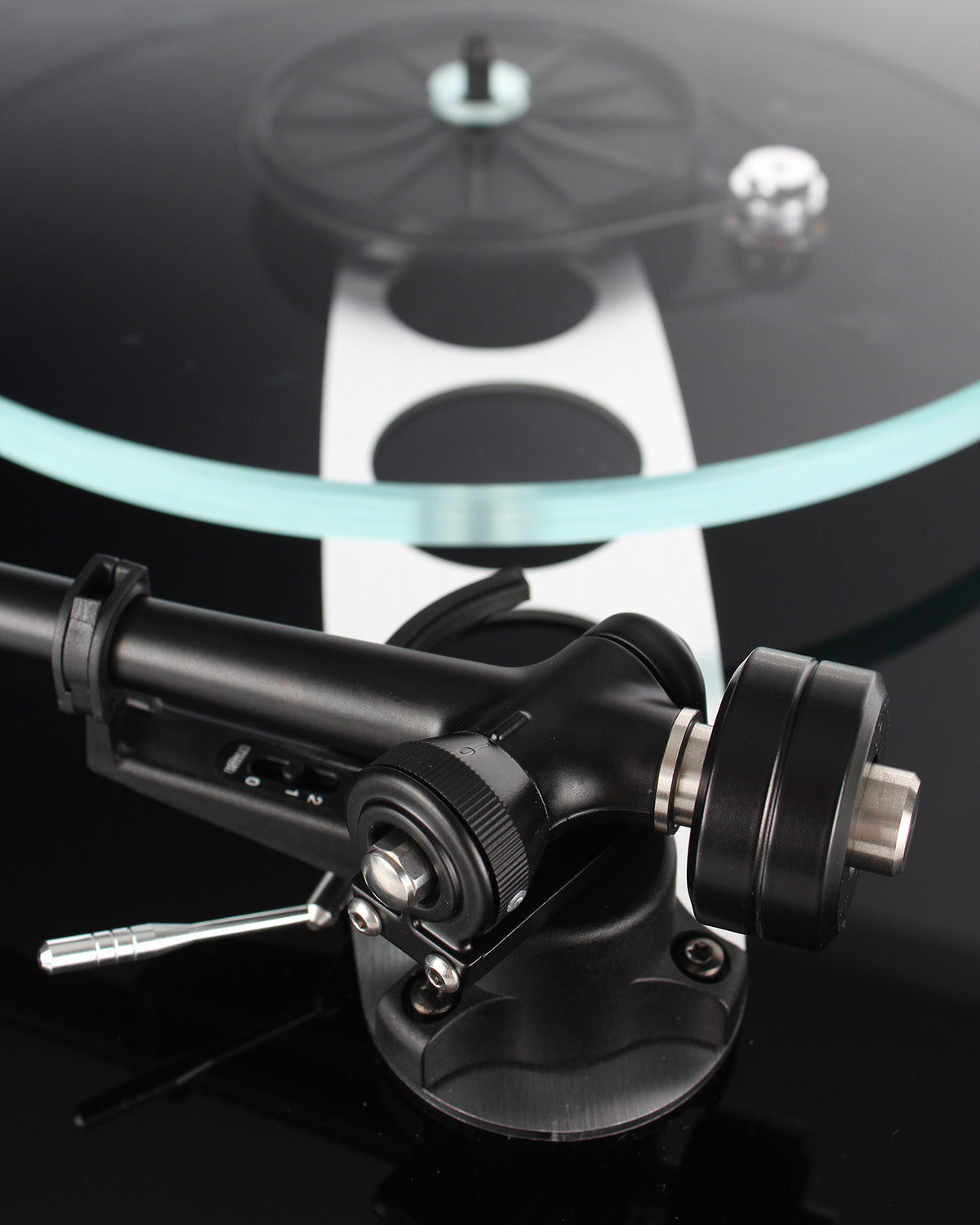
Rega RB-330 Tonearm
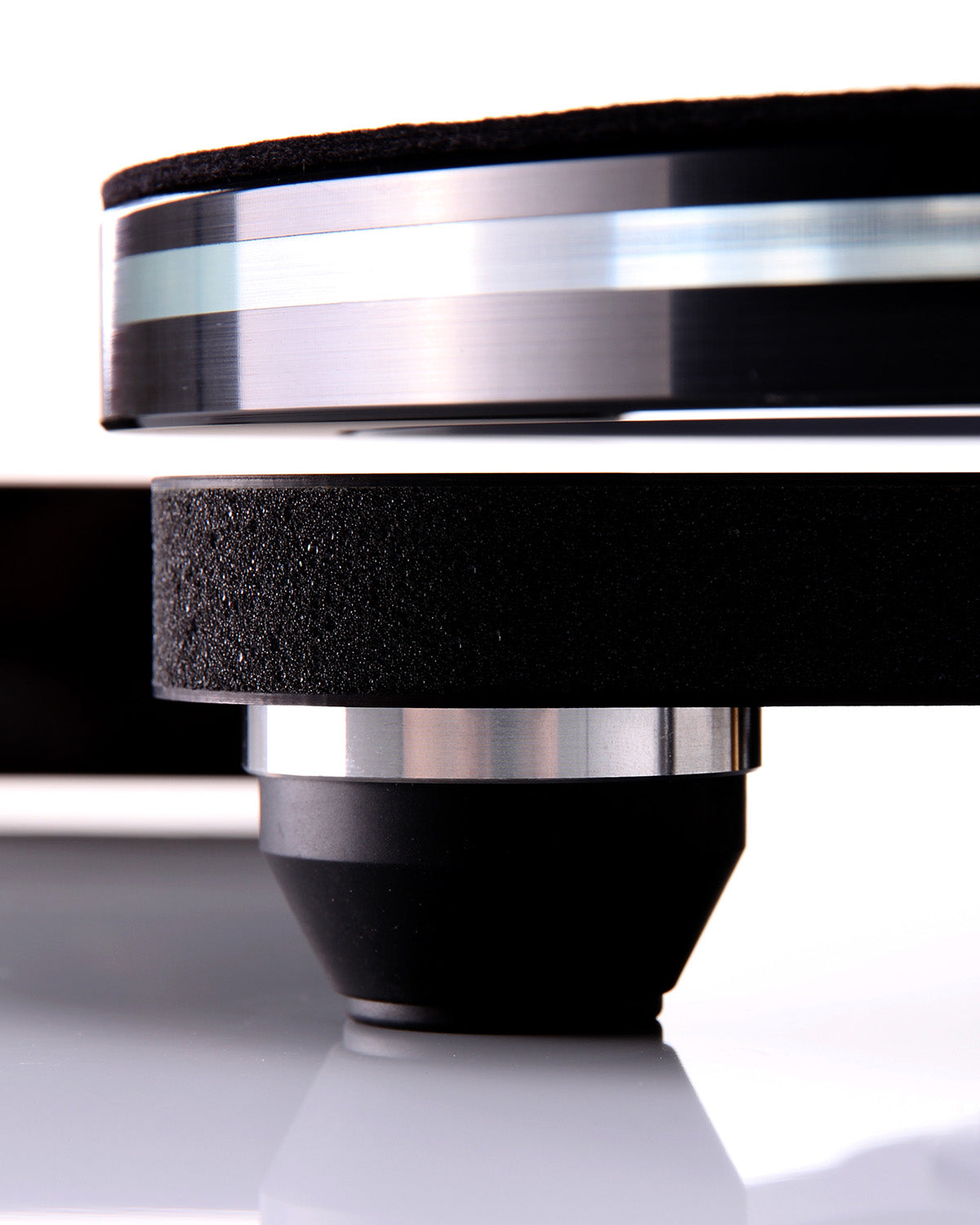
Plinth in material from the aerospace industry
5. Steps to set up the turntable
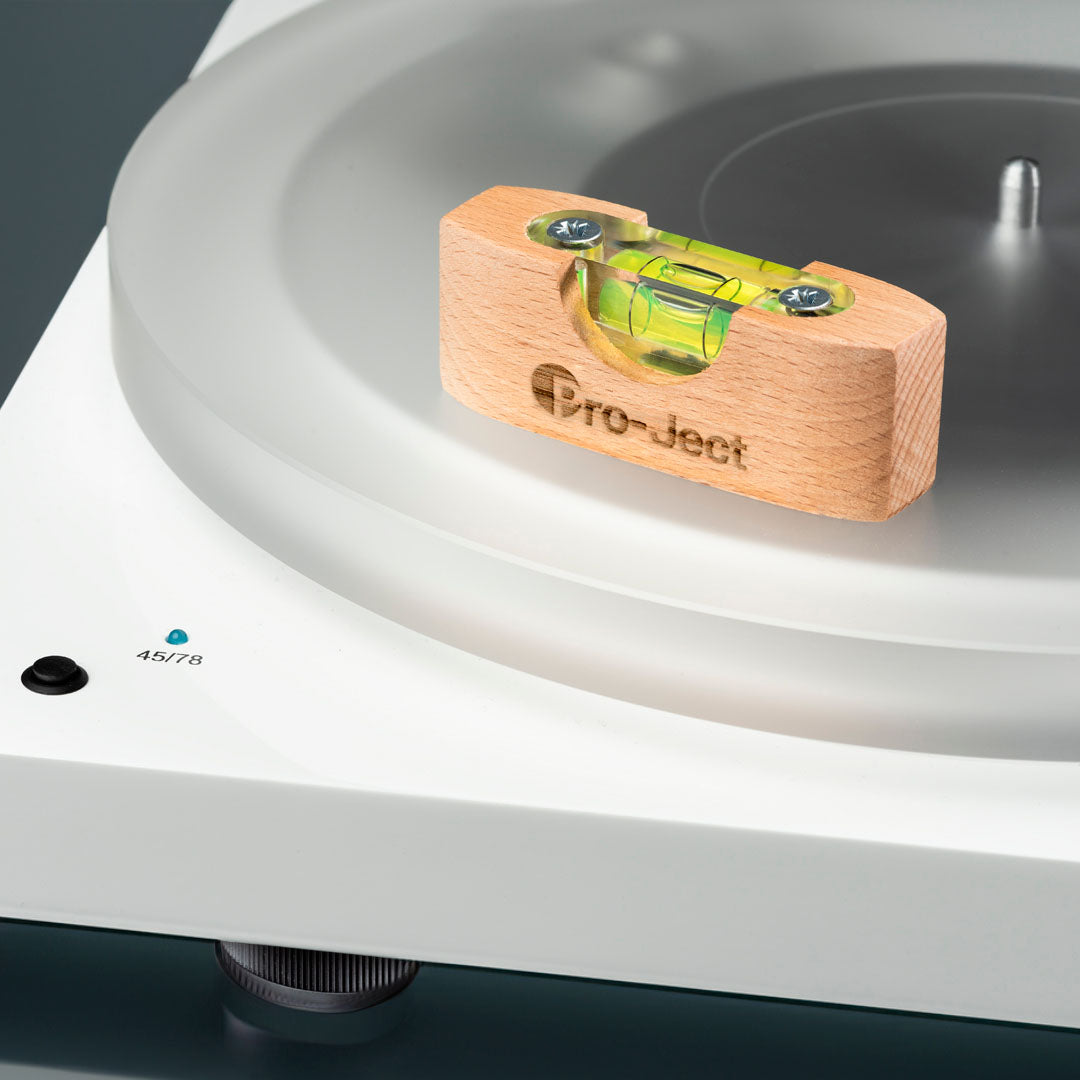
1. An even base
Begin by placing your turntable on a solid and level surface. Use a spirit level to make sure the turntable is completely level. This ensures that all the following adjustments are made on the right basis.
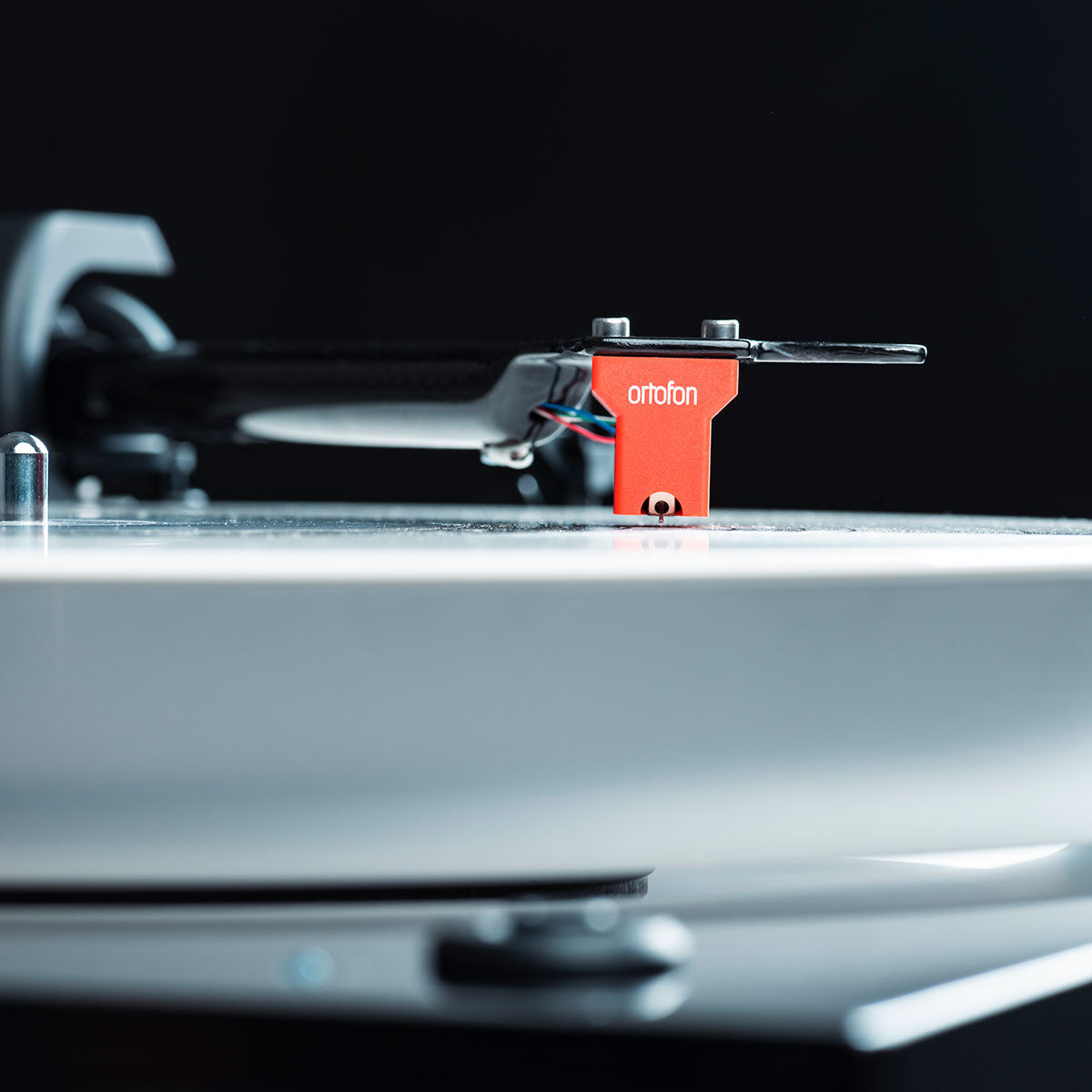
2. Adjusting the pickup
When we talk about the angle of the pickup, we refer to the exact position where the pickup is mounted on the tone arm, so that the needle has the right angle in relation to the grooves of the record. The correct angle adjustment is crucial for a precise and optimal sampling of the music.
To achieve the correct placement of the pickup, we use a protractor (a kind of scale) to guide us. The purpose of this adjustment is to ensure that the needle has the best possible contact with the record's grooves, resulting in a correct sampling of the sound. By following the lines of the protractor precisely, you ensure that the pickup is mounted at the correct angle in relation to the surface of the record.
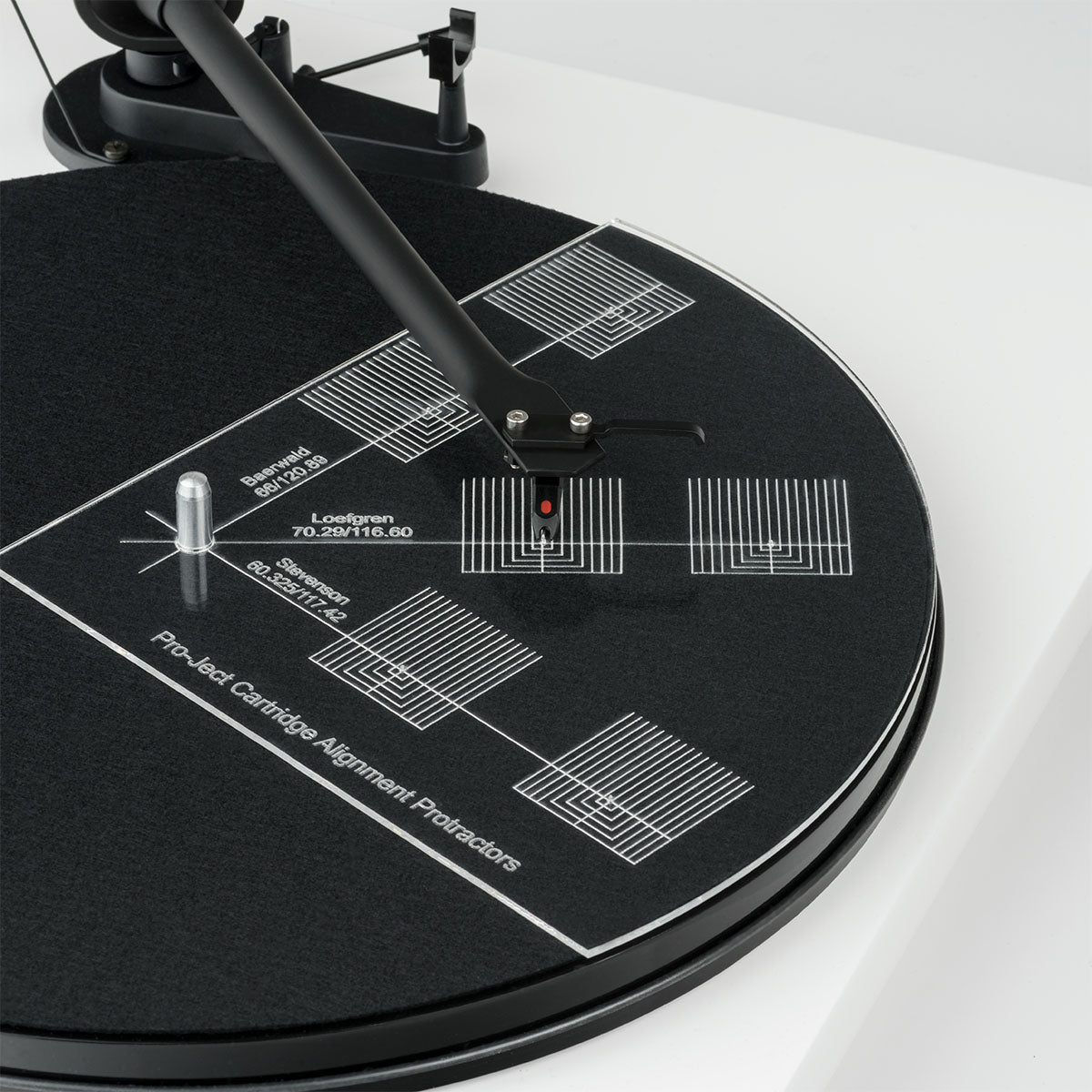
2.1 Use the protractor
Follow these steps when using the protractor:
- Place the protractor on the platen so that the small hole is centered over the center pin.
- Now adjust the pickup until the sides of the pickup housing are exactly aligned with the lines on the protractor. This ensures that the pickup is at the correct angle in relation to the plate's grooves.
It is important to note that the specific angle may vary depending on the make and model of your pickup. Some manufacturers may specify the desired angle in their documentation or instruction manual. If not, it's a good idea to make sure the pickup is aligned parallel to the plate's grooves as closely as possible using the protractor.
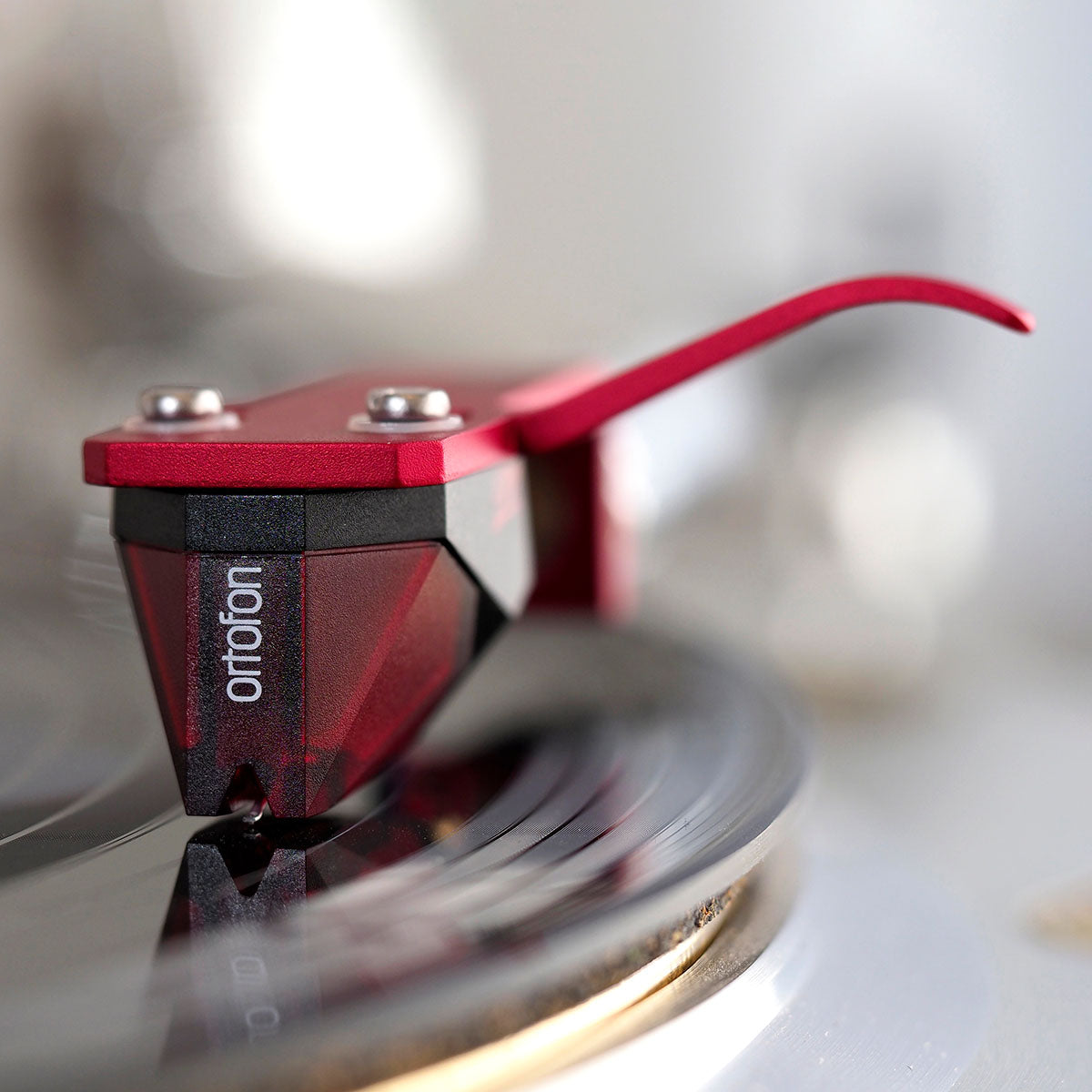
3. Set the needle pressure
The correct needle pressure is essential for accurate scanning and minimal wear on the plate. Find the manufacturer's recommendation for needle pressure. Use a digital needle pressure scale or the turntable's built-in scale to adjust the weight. Start by zeroing the pressure so that the needle floats lightly over the plate without touching it. Then carefully adjust the weight to achieve the recommended needle pressure.
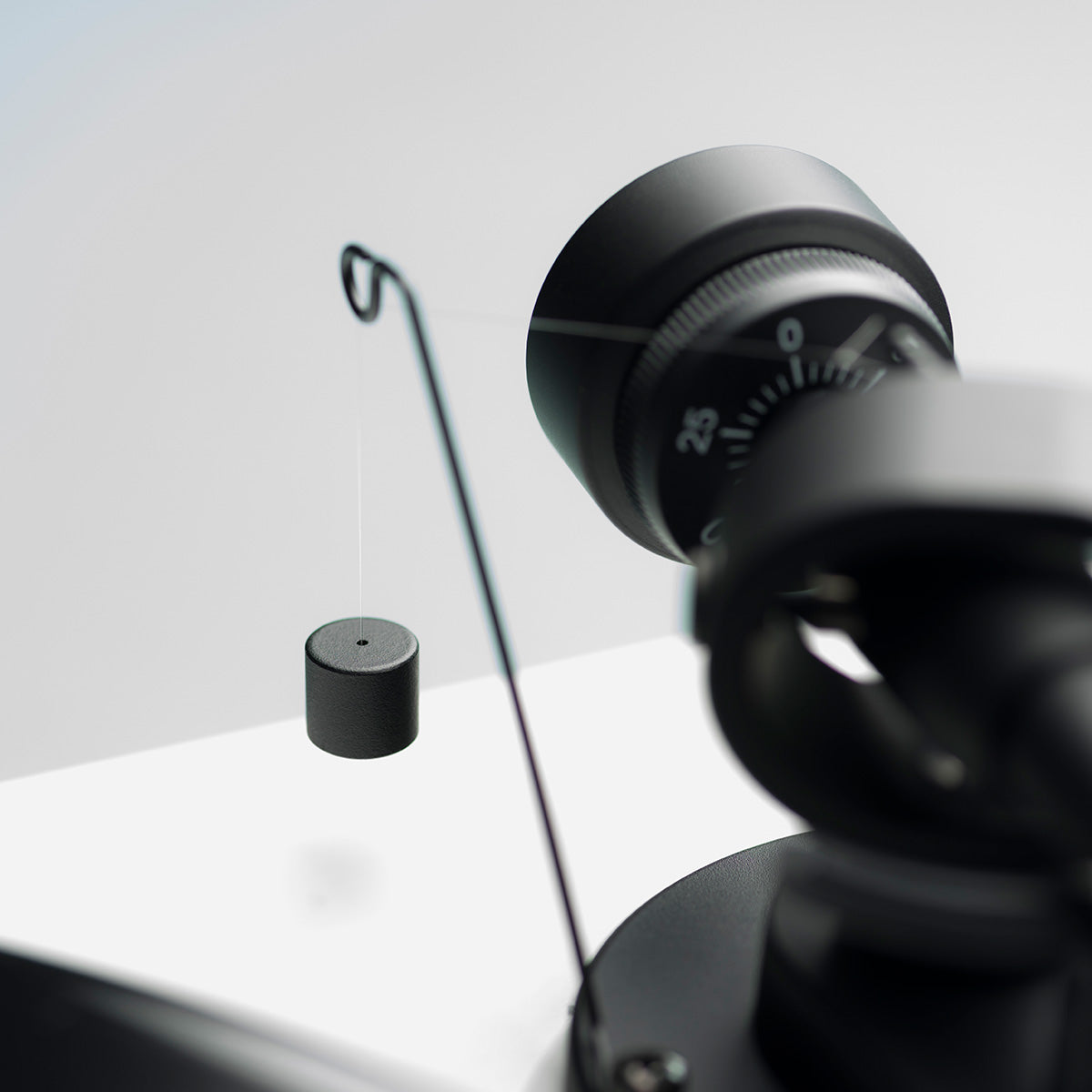
4. Adjust the anti-skating
Anti-skating is designed to maintain a balance between the force pulling the tonearm toward the center and the force from the needle seeking toward the outside of the record. This force occurs due to the centrifugal force from the rotation of the plate and the perpendicular movement of the needle in the grooves. By correctly adjusting the anti-skating, you ensure that the needle tracks the plate groove precisely and minimizes the load on both needle and plate.
To set the anti-skating correctly, start by locating the anti-skating control on your turntable. This control can take the form of an adjustable weight, a line or a magnetic adjustment. If the manufacturer does not specifically specify a value, anti-skating is usually set to the same value as the needle pressure. Place the pickup in the middle of one of your records and observe its movement. It must be in balance and neither pulled towards the center nor pushed away. When this is successful, you have set the anti-skating correctly.
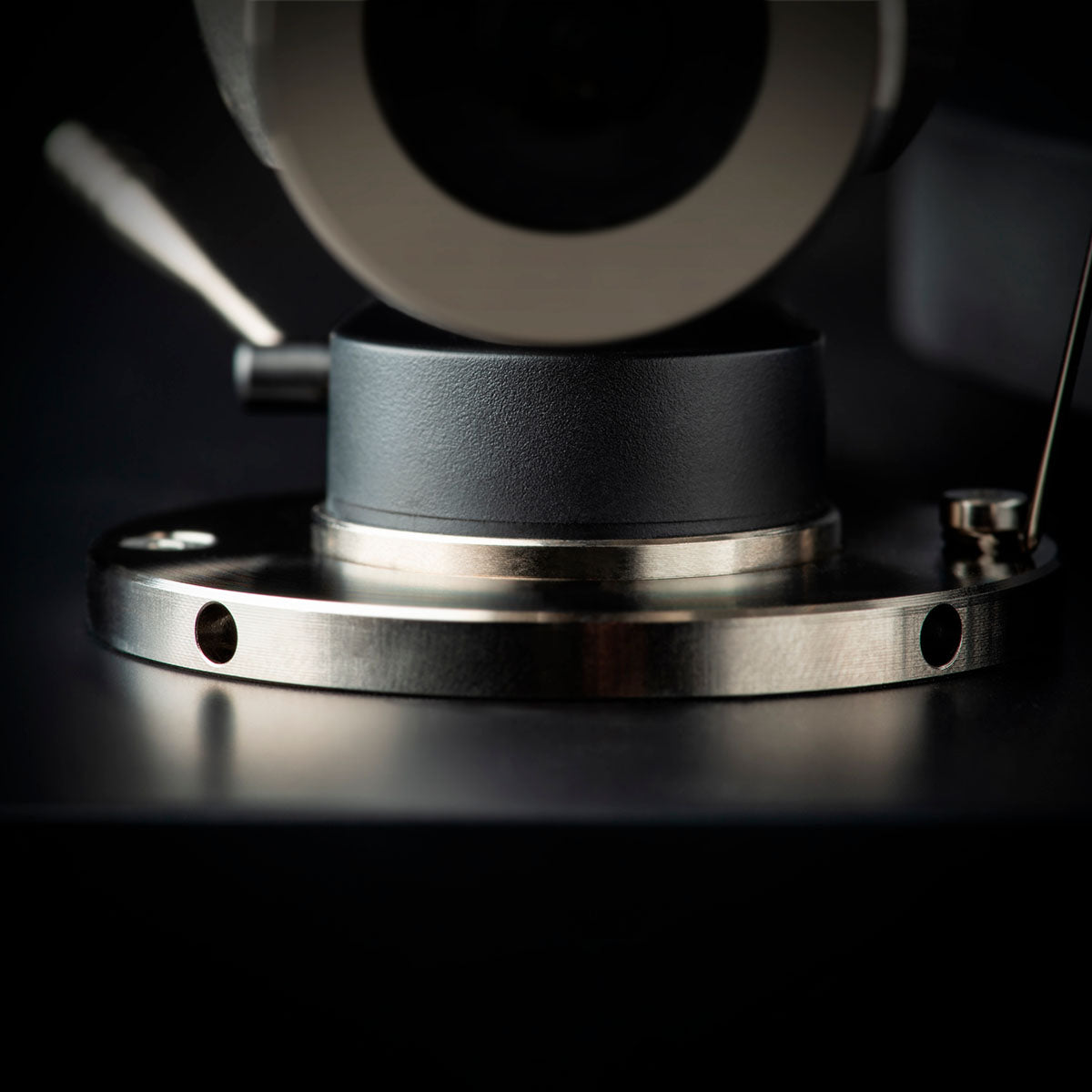
5. Adjust the VTA - The vertical tracking angle
With most turntables, you don't need to think about the VTA if you stick to the usual brands of pickups. This is because the turntable manufacturers have adjusted the VTA to match these brands.
However, if you start playing around with other sheet mats, pay close attention to whether they are the same height as the original, as this can change the VTA.
If you need to change the VTA, the angle of the needle tab must be level with the plate. When it is, you have set the VTA correctly. You will typically find the VTA at the back of the tonearm in the form of an Allen screw, as shown in the picture.
Let the sound specialist help with all the difficult things
When you buy a record player from us, you can have it adjusted by one of our specialists completely free of charge. Then you can leave your worries behind and enjoy the fact that it is ready to deliver the optimal sound quality - without you having to mess with all the technical stuff. The setting will be made by owner and product specialist Thomas Mørk, who has more than 30 years of experience with turntable setup.
At Lydspecialisten, we want your journey into the world of vinyl to be as trouble-free and joy-filled as possible.

Accessories for the record player
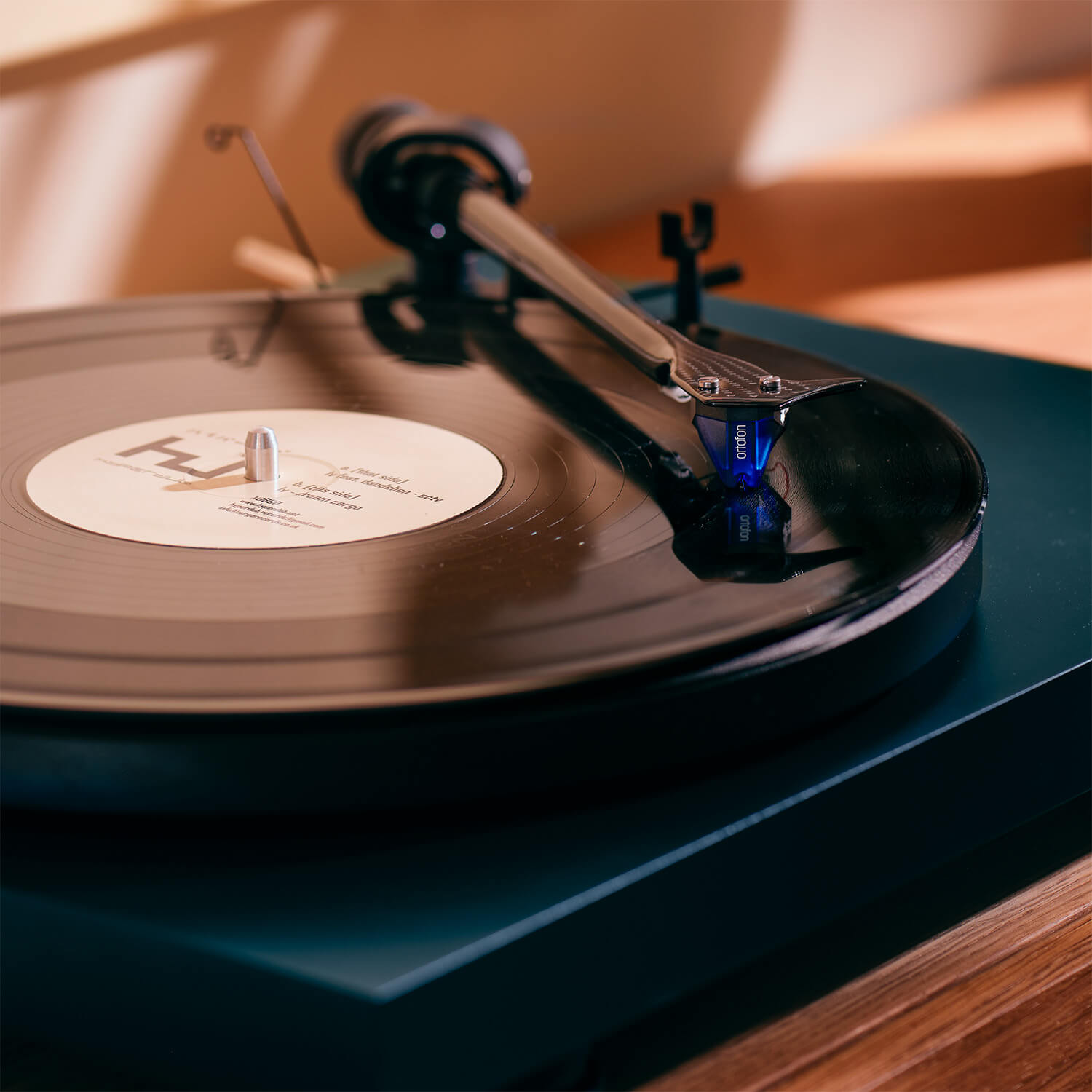
Pickups for every need
Pamper your record player with a pickup that fits exactly your needs. We will of course be happy to help you find the right one and with the installation.









